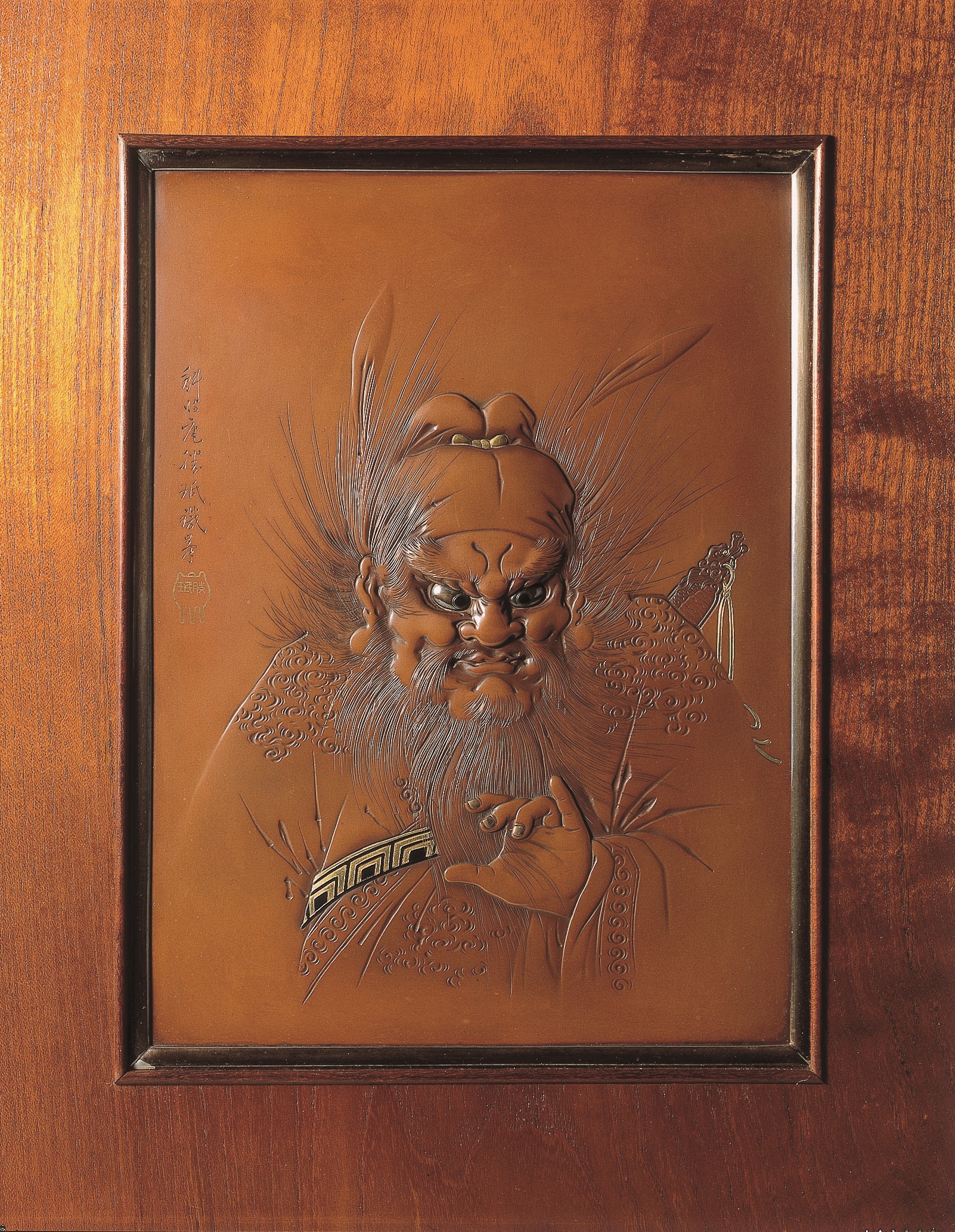 Print Page
Print Page
 Print Page
Print Page
Location: Japan
Materials: inlaid copper, uchidashi, katakiribori, silver, shakudo and gold
Dimensions: 25.7 x 19.2
Accession Number: M 163
Other Notes:
A carved and inlaid copper plaque decorated with a half-length figure of Shoki the demon-queller, bearing a fierce expression on his face, his hair blowing wildly about him. Worked in relief in uchidashi and finely carved in katakiribori. His eyes inlaid in silver with shakudo pupils, his waistband of gold and shakudo, other details on his hat and sword-tassel in gold. The whole set within a silver border.
With an inner and an outer storage box with inscriptions by Unno Kiyoshi, Shomin’s son. The outer box inscribed senko Shomin saku suaka usuniku Shoki gaku Taisho mizunotoi Unno Kiyoshi [made by father Shomin, copper panel of Shoki in low-relief carving, dated 1923, Unno Kiyoshi]. The inner box inscribed senko Shomin saku, Shoki, suakaji chokoku, Taisho mizunoe inu, Unno Kiyoshi [made by father Shomin, Shoki carved on copper ground, dated 1922, Unno Kiyoshi].
Unno Shomin (1844-1915) was one of the two most renowned of all Meiji metalworkers (the other being Kano Natsuo). He trained under his uncle Unno Yoshimori I (1785-1862) and later under Hagiya Katsuhira (1804-86) in Mito. He learned painting and drawing from Adachi Baikei and calligraphy from Take Shojiro. In 1871 he moved to Tokyo, changing his name from Kihei to Shomin. (The character sho means ‘to be superior to something’, and in this case he intended to be superior to the renowned Somin.)
In the First National Industrial Exposition (1877) Shomin exhibited some pieces, including figures, for which he received an award. According to Harada, ‘Metal-work’, pp. 98-9, he produced a metalwork okimono of a ‘Ranryowo’ dancer for the Second National Industrial Exposition of 1881, which was bought by the Imperial household. This is presumably a mistaken reference to the one actually made for the Third National Industrial Exposition in 1890 and now in the Imperial Collection, illustrated in Hasegawa, Natsuo to Shomin, fig. 25, for which he won the myogi (technical excellence) prize. He also exhibited in other domestic and international exhibitions, receiving many honours.
In 1890 he joined the Tokyo Art School as a teacher under Kano Natsuo and in 1894 became professor; he became an Imperial Artist in 1896. He acted as one of the judges at the Fourth and Fifth National Industrial Expositions of 1895 and 1903. He used the go Hoshu, Soetsuken, Tokasai, Teigetsuan, and Gyokuto.
Mounted in a mulberry-wood frame, the reverse carved in katakiribori and shishiaibori with an oni fleeing beneath swirling clouds.
Bibliography:
O. Impey, M. Fairley (eds.), Meiji No Takara: Treasures Of Imperial Japan: Metalwork Vol II, London 1995, cat. 78.
J. Earle, Splendors of Imperial Japan: Arts of the Meiji period from the Khalili Collection, London 2002, cat. 337, p. 456.
